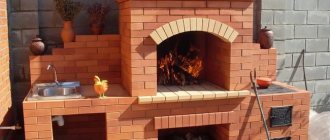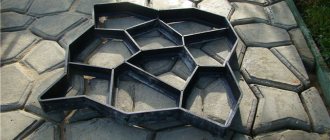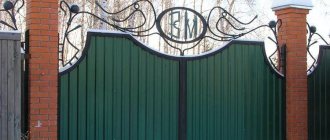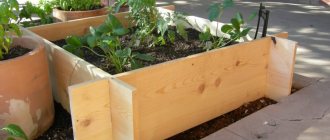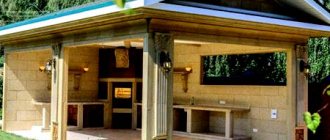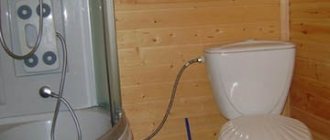Connecting water to a private home is a set of measures aimed at collecting documents, drawing up contracts, drawing up technical conditions and coordinating work with many authorities. Without knowledge of the intricacies of the legislation, the procedure takes a lot of time and does not always end successfully. What documents are required to connect water? In what order should I proceed to successfully connect to the central water supply? Where should I go, and do I need to obtain technical specifications? These and other questions need answers.
Let us immediately note that the procedure for connecting water supply to a private house involves going through several stages. Skipping any of them results in wasted time and the need to go through everything all over again. Below we provide detailed instructions that will allow you to reduce time costs and save money. But more about everything.
Obtaining technical conditions
The first stage is contacting the local water utility to obtain technical conditions for connection. In 2022, such structures operate on the “single window” principle (regardless of the city). The addresses of the branches available for contact can be found on the official website of the organization or by calling the hotline (can be found on the payment card). Reception of citizens, as a rule, is carried out from 8 to 16 hours with a standard break from 12 to 13. The organization does not work on weekends, so you need to apply from Monday to Friday.
Technical conditions are issued on the basis of the current Rules, which define the nuances of connecting capital facilities to the ITS, approved by Government Resolution No. 83, as well as a number of other documents. Thus, the request for technical conditions must contain the following information:
- The name of the applicant, his address (including postal address).
- Copies of constituent documents (must be notarized).
- Copies of documents confirming the applicant’s authority.
- Title papers for the land plot (if the application is submitted by the owner of the plot).
- Information about the boundaries of the land plot where the construction of a building is planned or on which a capital structure has already been built.
- Data on the permitted use of the allotment.
- Information on the boundary characteristics of the construction (reconstruction) of a capital building in relation to the landfill.
- Types of resources that must be obtained from information technology networks, as well as types of connected networks.
- Estimated date for putting the structure into operation (if such information is available).
- Planned load (if such information is available).
It is worth considering that the documents required to obtain technical conditions are transferred unilaterally and cannot be returned. This means that the documentation is transferred in the form of copies. If the applicant submits an incomplete package of documents, local water utility workers have the right to refuse until the comments are corrected. In this case, the decision to accept or refuse the papers is made within 14 days from the date of receipt of the package. If the answer is negative, the organization’s employees are required to explain the reasons for the refusal in writing.
If there are no comments and it is possible to issue technical conditions for connecting the facility, documentation is generated and transferred to the applicant within 14 days.
Installation stages
If you choose a well or borehole with a depth of more than 20 m, the water may not be suitable for drinking.
It is necessary to install treatment facilities and periodically maintain them. After the design stage with drawing up a diagram and calculations, taking into account the need for hot water, equipment is selected. The parameters are determined based on power (the volume of water pumped per hour).
The liquid must be supplied upward, passed through pipes and created such a pressure that is sufficient for the operation of the installed system.
The water supply route is always laid below the soil freezing level. Crushed stone is placed at the bottom of the dug trench. At the same time, maintain an inclination towards the source so that the system can be bleed by gravity.
The pipeline can be made of the following materials:
- Metal. Such systems are susceptible to corrosion and become dirty from the inside, but are suitable for any system, including heating.
- Plastic. It is not used to supply hot water, but is not expensive and lasts for many years.
- Metal-plastic. The most optimal option that can be used for the construction of any systems. It is not damaged by corrosion and can withstand temperatures up to 95 C.
All elements are connected according to a certain scheme. From the source, water passes through:
- a filter that prevents the penetration of sand and debris into the system;
- check valve, which prevents liquid from flowing in the opposite direction;
- a deep purification filter that removes small particles and silt from water.
Next, the pumping station forces the resource to circulate through the system, and the control unit of measuring instruments regulates the operating parameters of the network. The liquid passes through a fine filter, eliminating remaining contaminants and making the liquid suitable for consumption.
Submitting an application and documents for connecting water to a private home
From the moment the technical conditions are received, one year is given to draw up an agreement on connecting a private house to the central water supply. As in the previous case, the applicant goes to the local water utility, fills out an application and submits it along with a package of papers to the “single window”.
List of documents for water supply connection:
- Constituent papers of the company (copies).
- Documentation confirming the rights of the subject (applicant).
- Title papers on the memory (copies).
- Situational plan for the location of the object in connection with the city territory.
- Topographical map of the territory, made on a scale of 1 to 500. The map indicates all communications that are located underground and above its surface. It is important that the scheme is agreed upon with each of the operating companies.
- Information on the timing of construction (restoration) activities, as well as the commissioning of the facility.
- Data on the characteristics of wastewater (composition, properties) that must be discharged into the central system from a private house.
- Balance of water consumption and drainage of the connected building. The purposes for using cold water are also indicated here, as well as the distribution of load volumes in relation to the purposes of use (including for extinguishing fires, temporary needs, filling or draining the pool).
- Data about a private house (or other structure), number of floors, height and other characteristics.
As in the previous case, documents for connecting the water supply to a private house are transferred unilaterally. In the future, they are not returned to the applicant, so copies must be given. Vodokanal employees check the submitted package for completeness and, if there are missing papers, transfer the documentation back to the applicant. In this case, the decision on acceptance or refusal of documentation is made within 10 working days from the date of receipt of the papers. A prerequisite is a written indication of the reasons for refusal.
If all documents have been submitted and representatives of the water utility have no claims against the applicant, an agreement is drawn up. It specifies the terms of cooperation and the procedure for maintaining networks.
Arrangement of a caisson when carrying water from a well
A caisson will definitely have to be installed if you operate the well all year round. This design is made in the form of a waterproof chamber, which is located in water-saturated soil. The caisson source is easy to maintain and use.
In addition to the caisson, you should also install a hydraulic accumulator, a submersible or surface pump, pipes, shut-off valves, and a head.
Why is this necessary:
- the equipment will be neatly located in the chamber; there will be no need to allocate space in a residential building. You just have to lay a pipe into the cottage and run an electric cable for the pump;
- when you live in a house in the summer, in order to drain water from the system in the fall, you will need to open the drain valve, which is located in the caisson.
If there are many consumers in the area, several pipelines will need to be removed from the caisson. Valves are installed to open or shut off the water supply.
To make it easy to remove the pump from the well for maintenance, you should install a winch in the upper compartment of the chamber.
The chamber prevents freezing of equipment located in the well. When the caisson is installed optimally, the well will not freeze, even if there is severe frost outside.
If a caisson is equipped, the well will not be negatively affected by cold, snow and other weather phenomena.
The main thing is that the caisson is completely sealed. Otherwise, contaminants from the chamber will penetrate through the casing pipe into the aquifer. To ensure that the water always remains clean, the head and caisson must be dry.
To determine the height of the caisson, it is necessary to take into account the depth to which the soil freezes. The caisson must be located below the freezing depth, so it is worth targeting at least 200 cm. To operate the well conveniently, the diameter of the caisson should be 100–150 cm.
This is interesting!
How to save on sewerage: design, selection of equipment, operation More details
The chamber can be metal, plastic, brick or reinforced concrete. At the bottom there should be a place for attaching the structure to the casing. In the walls of the caisson there are pipes through which water pipes and electrical cables are routed. To allow easy access to the equipment, a ladder is installed in the caisson. A tight lid is installed on top of the chamber.
Drawing up design estimates and connection
The subsequent procedure for connecting water supply to a private house involves the following steps:
- Contacting a design company, whose specialists draw up a project and estimate future costs. The work is carried out on the basis of the documents provided. With the received papers you need to go to the water utility to agree on the contents.
- Carrying out work to connect water to the facility, taking into account the received documentation (project and estimate).
- Notification of a local water utility representative about the completion of measures to supply water from the public network to a private home. Representatives of the organization put their signature. At the same time, the customer also signs the readiness certificates.
Preparation of work for the extraction of drinking liquid
If you decide to start constructing a residential building with the necessary infrastructure, then first carefully study the Russian legislation on private housing construction. According to the regulations, you must arrange a water source at a certain distance from the premises. In addition, inspect your area: trees should not grow in the area. If they are present, then get rid of not only the trunks, but also the roots. Over time, they can damage the plastic pipe. When designing, it is necessary to conduct geological exploration of the area. You can’t do it on your own; you’ll have to invite specialists from. They will assess the depth of the aquifer, thickness, relief features, and give recommendations on laying communications. Only after receiving the conclusion will it be correct to begin work step by step.
Transfer of executive and technical papers and execution of a contract for water supply
As soon as the above steps are completed, we go to the local water utility and give the organization’s employees the executive and technical papers regarding the work performed to connect a private house or an entire street. Documents must be drawn up taking into account the requirements specified in SNiP. A topographic survey of the structure on a scale of 1 to 500 will also be required. After studying the papers, the authorized body gives permission to connect a private house to the central networks. Immediately after this, the connection is made and the corresponding act is drawn up.
According to the current procedure in the Russian Federation, the last stage is the execution of an agreement for the transfer of drinking water. These powers also lie within the scope of the local water utility. In this case, it is better to clarify the work schedule and visiting days in advance.
We carry out the plumbing ourselves
The most budget-friendly solution is to lay the pipeline yourself. Before running water into any private home, you should draw a diagram (strive for clarity). The diagram should make clear the location of pipes and water intake points, the approximate laying area, taking into account interchanges. Mark the obstacles on the terrain (they will have to be removed before installation; some awkward mound, boulder or stump sticking out of the ground can significantly complicate the installation). Then gradually introduce water into the house.
What is the fine for unauthorized insertion?
Construction of a well at the connection point
Have you noticed that along the central water supply line there are wells with outlets located at intervals of 100 m, making it possible to connect additional lines? TUs are given to the nearest well.
If it is not observed, it would be logical to equip your own well in the same place as the water supply. Possible materials for it:
- gas silicate (but not for long);
- brick (expensive);
- rings made of reinforced concrete (the best option).
For safety reasons, the well must be covered with a lid. Plastic can only be used if vehicles will not pass over its surface (otherwise it will not last long).
Connection to the main pipeline can be made:
- insertion (requires a welding machine);
- without welding - using a clamp (no need to disconnect the central water supply). A clamp is mounted on the supply pipe and drilled through a special hole. Screw an open tap onto the thread of the clamp and close it. If the valve is a ball valve, drilling is done by first installing it.
When using a clamp, dress appropriately and do not use a power drill - everything will get wet.
Digging a trench for laying pipes
To lay and supply water to the house, you need to dig a trench. This can be done in two ways:
- order the work of special equipment (a small excavator will do an excellent job; trenchers are also used);
- dig on your own (it is advisable to do this in a group - with family or friends, otherwise you will face a long and tedious process).
The essence of the trench is that it should not only conceal, but also protect the pipeline from freezing, so it is dug below the freezing point of the soil in a given region. Usually it is from 1.5 to 2 m, unless, of course, you live in the Arctic. (All the nuances of digging)
Then a sand cushion with the addition of crushed stone is created for the pipeline. It will cushion it and prevent groundwater from seeping into it (otherwise the pipes may freeze over in a harsh winter).
If you have a plot of land with special features and it is impossible to dig to the required depth, you will have to additionally insulate the pipes. For this we use:
- foamed polyethylene;
- expanded polystyrene;
- basalt wool.
You can fill the pipeline with expanded clay (it is not thermally conductive).
Creating an entrance to the house
Through the fitting, we connect the pipe to the centralized main (using a shut-off valve and sealed metering devices). After this, we lay the water supply into the house:
- under the foundation - do not forget about depth and insulation;
- through the foundation - punching an inlet hole is required (attention: it should be made 15 cm larger than the cross-section of the pipe to prevent deformation and destruction of the pipeline if the wall sags).
We pay special attention to this area - it can lie in the ground at a shallow depth, this is risky in terms of freezing. Therefore, it must be carefully insulated.
Choosing the best pipe and laying the line to the house
The main element of a plumbing system is pipes. You need to choose the best option. There is a choice:
- galvanized steel are resistant to serious mechanical overloads, but they rust, and their installation involves threading or welding, which is difficult and time-consuming;
- copper pipes are long-lived, but they cost “like a cast-iron bridge” and are difficult to install;
- polymer (polypropylene, HDPE) are easy to install, moreover, they are resistant to aggressive chemical influences and are inexpensive;
- Metal-plastic is also neutral to aggressive chemicals, has excellent throughput, is not afraid of ultraviolet radiation and corrosion, but does not tolerate high temperatures.
When the water supply to your home is completed, do not rush to bury the trench. You need to test the system - run water for testing and make sure that the joints are not leaking. If a leak is found, it must be repaired.
Connection costs
The cost of services depends on many factors. For example, connecting water to an entire street will cost more than connecting communications to a private house. But here, too, much depends on the planned load, the length of the connected networks, the diameter of the installed pipe and other parameters.
For a preliminary calculation, you can contact your local water utility or use a calculator, which can be provided on some websites (for example, on the Mosvodokanal website). Using the program, you can calculate the connection price (approximate) for Moscow. The calculation is made after specifying the location of the object, as well as the required loads. In addition, site visitors can print a fragment of a map with networks marked on it and the approximate cost of connection.
In addition, on the official websites of local water utilities, as a rule, the procedure for connecting the water supply (water) to a private house or for an entire street is discussed. Here are the requirements for documents, deadlines and approximate tariffs.
Advantages of centralized water supply
You can also supply water to your home from autonomous sources - wells, wells, natural reservoirs (read more here). This water supply option has many advantages, but its organization requires a lot of money and labor. And the quality of water, its pressure and provision of the required volume of liquid will become the sole concern of home owners.
However, connecting your home to a centralized water supply system is also not always the best solution. Especially if this system is already worn out or was not originally designed for a large number of consumers. In this case, both the quality of the supplied water and the main criteria for the normal operation of the water supply system - flow and pressure - may suffer.
Old networks and low pressure are a reason to think about autonomous water supply
If the system is new and modern, and runs close to your site, then you cannot find a better source. Connecting to it provides a huge advantage compared to installing a well or well.
- The money savings in this case are very noticeable. To connect an individual house to the water supply of a populated area, you will have to pay much less than to drill a well or dig a well and then equip them with pumping equipment and water treatment systems.
- The savings in time and labor costs are also obvious. And not only at the construction stage, but also during operation: the resource supplier will be responsible for the normal operation of the equipment and its repair.
- The quality of water and its compliance with sanitary and hygienic standards is also not your concern. It is supplied to the consumer already purified and disinfected, which eliminates the need to install water treatment equipment in the house.
The only serious drawback can be considered the likelihood of water being turned off in the event of an accident or repair work on the highway, or insufficient pressure during peak hours. But such situations are not excluded when water is supplied from an autonomous source. The pump may break down, water may leave the well or its level may drop.
Advice. Regardless of the chosen water supply scheme, it is advisable to have a storage tank in the house for a reserve supply of water in case of a sudden shutdown or unforeseen breakdowns.
Pipe connection
Regarding the connection of different types of pipes. This is also where problems often arise. For example, there is no factory adapter to switch from an asbestos pipe to a plastic one (now about sewage). In such cases you have to invent.
You can, of course, not install an asbestos pipe; instead, take an orange pipe for exterior use, and calmly bring it into the house. Inside the room, the transition to the desired diameter is already underway.
However, if you still decide to use an asbestos pipe, you can proceed as follows to switch from it to a plastic pipe without using an adapter. Pipe insulation made of foam rubber is wound onto a half-meter piece of plastic pipe, fixed with wire, lubricated generously with silicone and tightly inserted into the asbestos pipe with continuous scrolling. In this case, high-quality tightness is ensured for a long time. This is explained by the fact that all materials are synthetic: rubber, silicone, plastic, asbestos are indestructible for a long time.
Project implementation
Once the technical conditions are met, you can begin to design the water supply system. Without design, it is impossible to sign an agreement with the water utility.
Any company with the appropriate qualifications can design a water supply system, but only the water utility has the right to approve it.
- The implementation of the project must be coordinated with the service that provides electricity, gas and telephone companies so that the future water supply does not interfere with their activities. Only an architectural company can approve the action plan.
- When all the documents are ready and all permits have been received, the home owner needs to resolve the issue of installing a water supply system. This can be done either with the help of specialists or independently. Considering the cost of materials and fittings, even independent installation will not be cheap.
If the owner decides to lay the pipes himself, then he will need to draw a diagram on which it is necessary to mark the water points and junctions. You need to pay attention to the landscape, and, if necessary, remove all obstacles and level the territory.
Possible nuances
During the process of self-installation of a water supply system, serious mistakes may occur even at the design stage. If you do not seek the help of professionals, it will be difficult to make the correct calculations and select equipment.
If the pipeline is located above the soil freezing level, it must be insulated. inspection wells are installed in areas where the pipes change direction . If the route becomes clogged, they can be used to carry out cleaning work.
You should also choose the size and material of the pipe . The possibility of combining is not excluded, but in such cases it is necessary to purchase adapters. Plastic routes are not suitable for supplying hot resources, otherwise the joints will depressurize. Iron systems need to be maintained by periodically painting over the entire area. Metal-plastic does not require any maintenance.
Which pump to choose
In order for water to flow from the tap, you need to install pumping equipment that will cope with the task.
The main thing is to take into account several parameters:
- how much liquid will be consumed;
- where is the highest point of consumption;
- what performance is needed;
- how deep is the well;
- average pressure (will be written in the passport).
We recommend using a voltage stabilizer when connecting such equipment.
